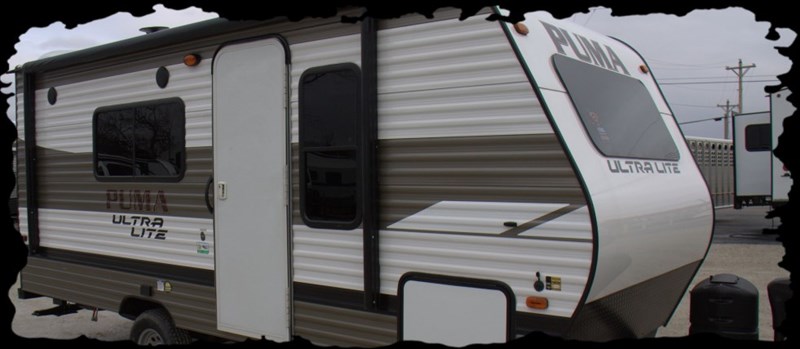11 Awesome Tips for Winterizing Your Travel Trailer
Once you start noticing the signs of winter, you feel sad that you won’t be able to go camping for the next few months, since it will be so cold outside. Besides this, another thought comes prominently to your mind that it’s the time to store away your travel trailer because it won’t be in use for a few months. Well, that’s right. However, just storing it away in a secure spot is not enough. You should prepare your camping trailer for winter storage which is known as winterizing. Do you know how to do it? Here are a few tips.
1. Wash and Dry Your Travel Trailer
Before you take your trailer to the spot where it will stand without moving for some months, you should give it a thorough wash because that way you’ll have your vehicle in a spick and span condition for your next camping trip.
You should not only clean the exterior of the vehicle, but also its awnings, tires, wheel wells and any nooks and corners that may have hidden dirt.
Then once you are sure that the RV is perfectly clean, make sure it’s completely dry. Drying is crucial because even a small quantity of moisture may cause corrosion and rust over time.
2. Drain the Water and Dry Water Lines
Just as you should dry your RV after washing to eliminate any moisture, you should also make sure not to have water in it during the storage period in its water holding tank, gray holding tank and black holding tank. Flush all these tanks. Some RVs are equipped with a built-in system for this or you may have to clean them manually with a wand.If water remains inside your RV when it’s cold outside, it could freeze and cause havoc to your vehicle. However, don’t drain the water heater until you add antifreeze.
Once you drained all the tanks, flush the toilet a few times, open all the faucets and turn the shower on to make sure all the water is out. Then blow air through all the water channels to drive out any left out water. Then close the drains with caps and shut all the faucets.
If you have a washing machine or ice maker in the trailer, consult the user’s manual to find the best way to winterize these appliances. Also, if the water heater works on electricity, turn it off.
3. Add Antifreeze
It your RV has its own indoor plumbing system, you’ll have to add non-toxic RV camper antifreeze to it to save the pipes from freezing. You can add it with the help of hand pump from outside or with a water conversion kit. Consider skipping your water heater to save it from using gallons of antifreeze. Then turn the water pump on to pressurize the system. Access the nearest faucet and open the hot and then cold valves till antifreeze is seen. Do this for all faucets and then flush the toilet till it’s seen. Turn the water pump off and open a faucet to relieve pressure. Add a little antifreeze to each drain and toilet. Flush the toilet to bring it to the holding tank.
4. Clean the Refrigerator and Other Storage Components
Remove everything from your refrigerator and clean it completely. Don’t let your fridge have some old or leftover food or sticky drink as it would then lie there for the winter months and attract pests. Clean other storage units such as drawers and cupboards thoroughly.
Make sure you clean the kitchen. Check if there are any food crumbs left inside.
5. Prevent Pests
Removing any food or drink leftovers is the best way to prevent pests in the RV during the winter storage. Another essential thing you should do is to look for any holes or gaps in your vehicle through which pests can make their way in. If you find any such holes, fill them with caulk which is an easy task.
6. Close Holes and Vents
Close all holes and vents including roof vents, fan vents, exhaust pipes, vents around appliances, and wider gaps such as that around doors. For some areas, you can even just place a sheet of plastic over the openings and secure it with tape or beneath an existing cover. But don’t forget to remove all these covers when you’ll take your RV out from storage for your next camping trip.
7. Prevent Rodents
Rodents are infamous for chewing up seat cushions, curtains and even the floor, and destroying electrical wiring. While your RV will remain unattended for a few cold months, there are all chances for rodents to get in and cause the destruction. Closing all the holes and vents is one way to prevent them. But you may even have to go underyour trailer where there would be small holes, even about penny-size. You should fill them with aluminum or brass wool. In the interior of the RV, you should consider placing moth balls or setting traps.
8. Have a Nice Fragrance
When after winter, warm pleasant season would come and you’d happily open your RV again for an exciting camping trip, you don’t want to be welcomed with a foul smell. Spraying peppermint oil would give your trailer a nice fragrance all through its storage period.
9. Charge Battery
Charge your 12-volt battery fully before storage and top off the water levels. If the weather is too cold, it’s better to remove the battery and place it in a dry and warm place.
10. Increase the Life of Tires
Tires can wear out even if they are not in use. You can extend their life by providing them additional support with the RV’s leveling system. Consider using outside blocks or jacks too.
11. Keep it Covered
Consider covering your RV whether it’s to be stored outside or in a barn to save it from grime, snow and dust. Preferably use a breathable material to cover it so that mold and mildew will be prevented as moisture won’t be trapped beneath the cover.
So, have you started planning the winterization of your travel trailer?


